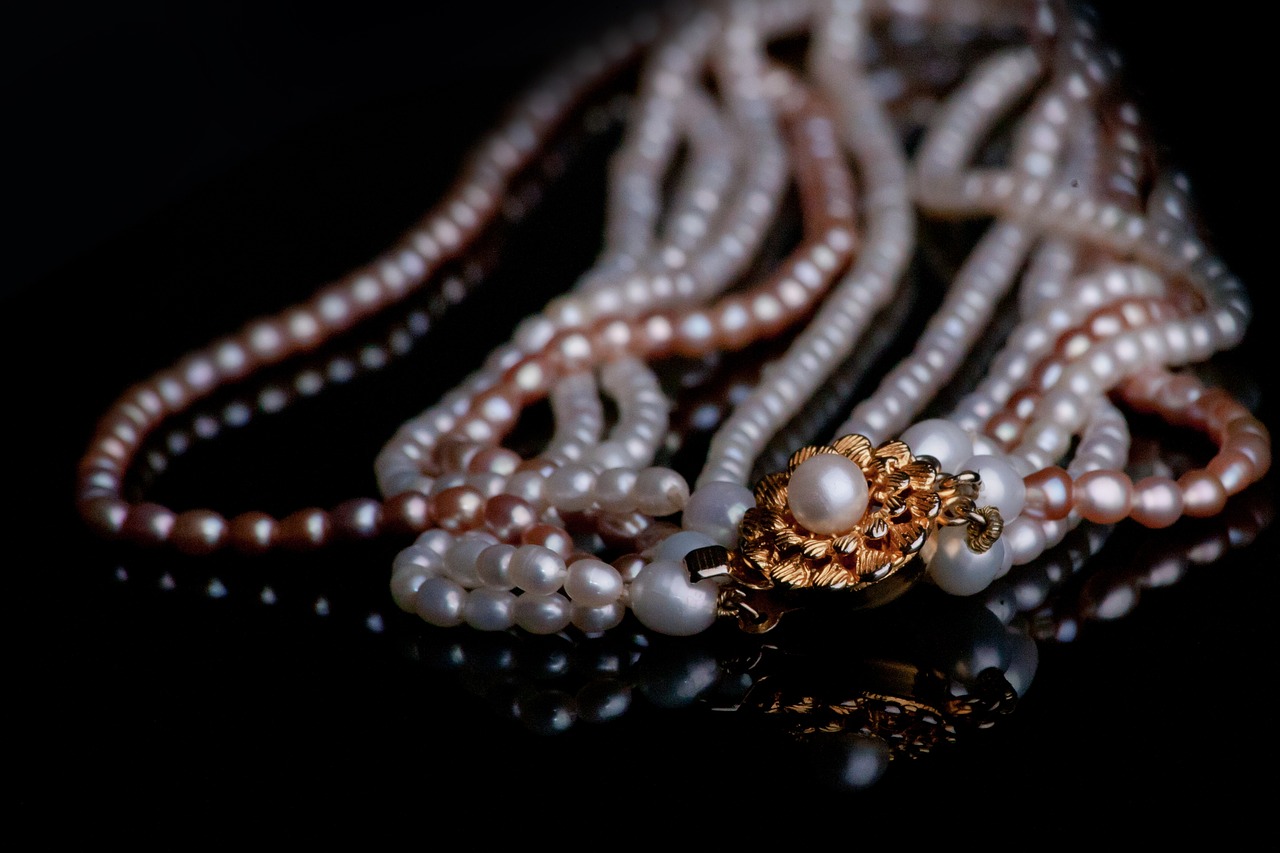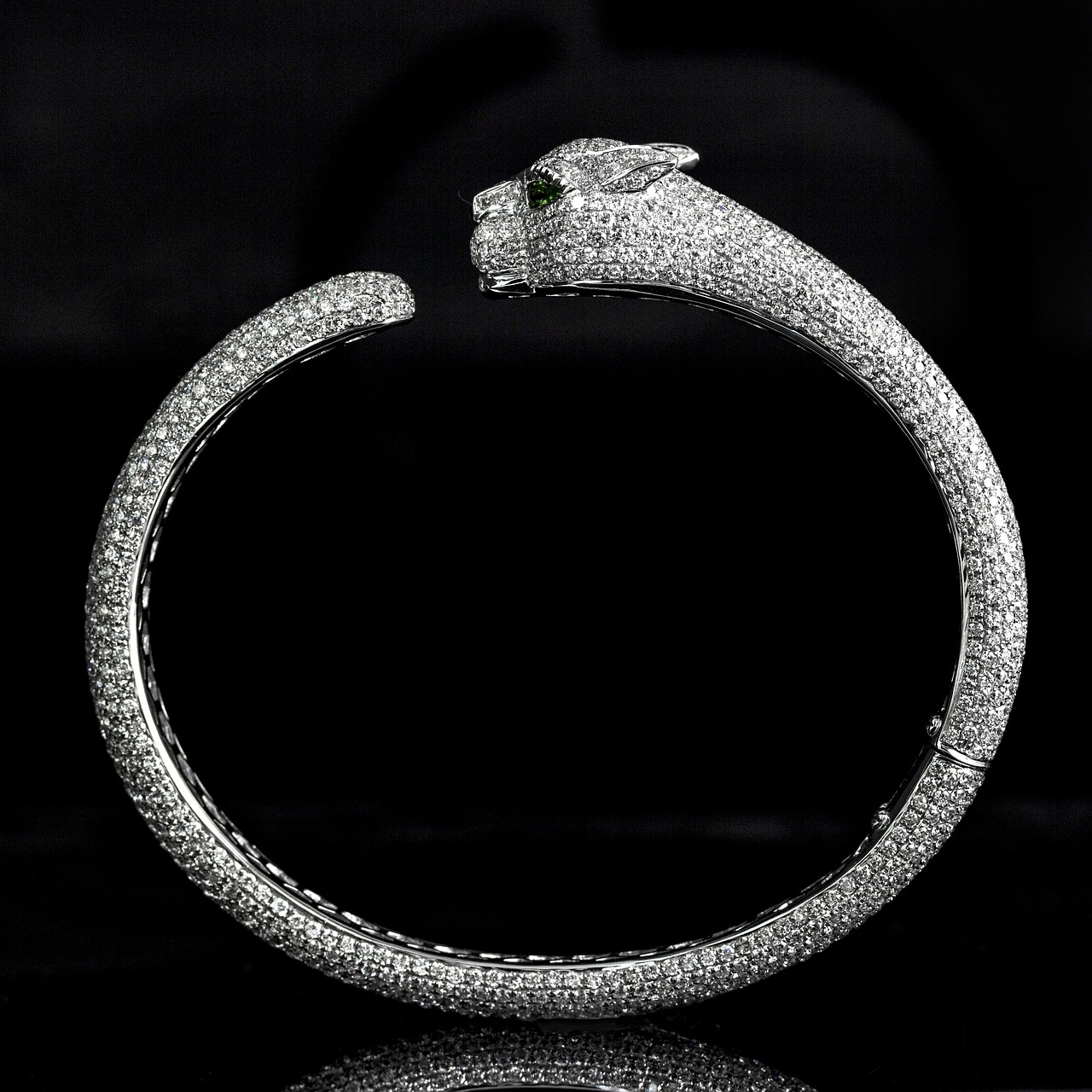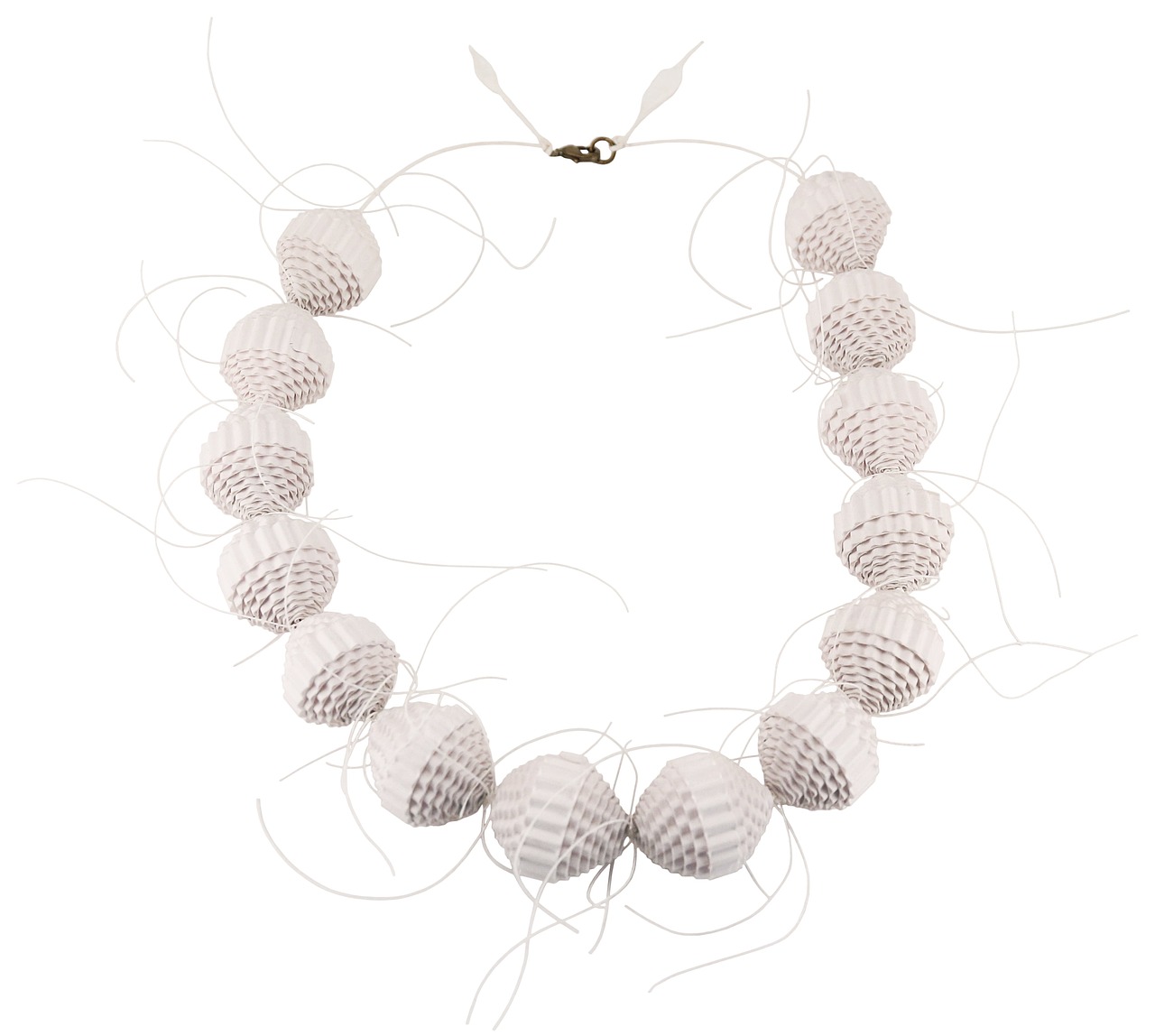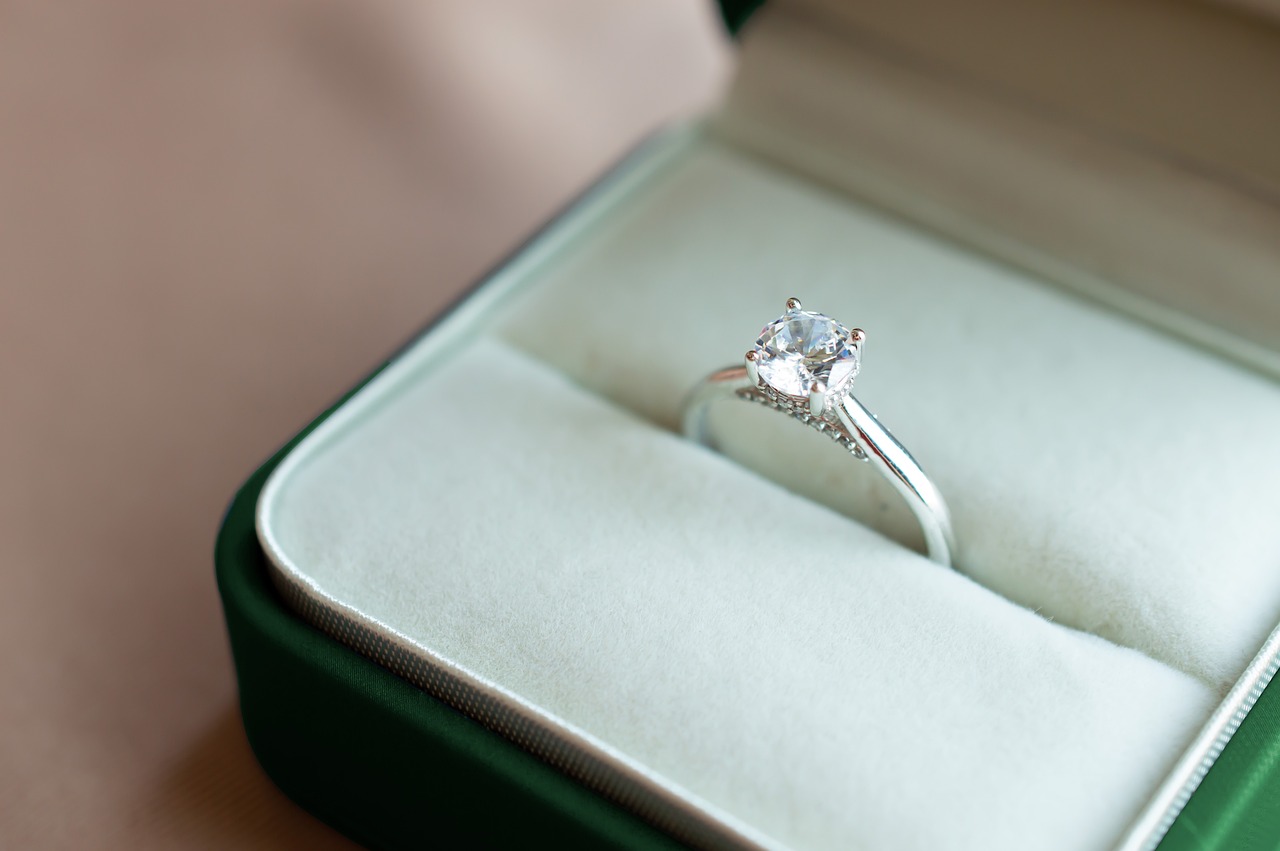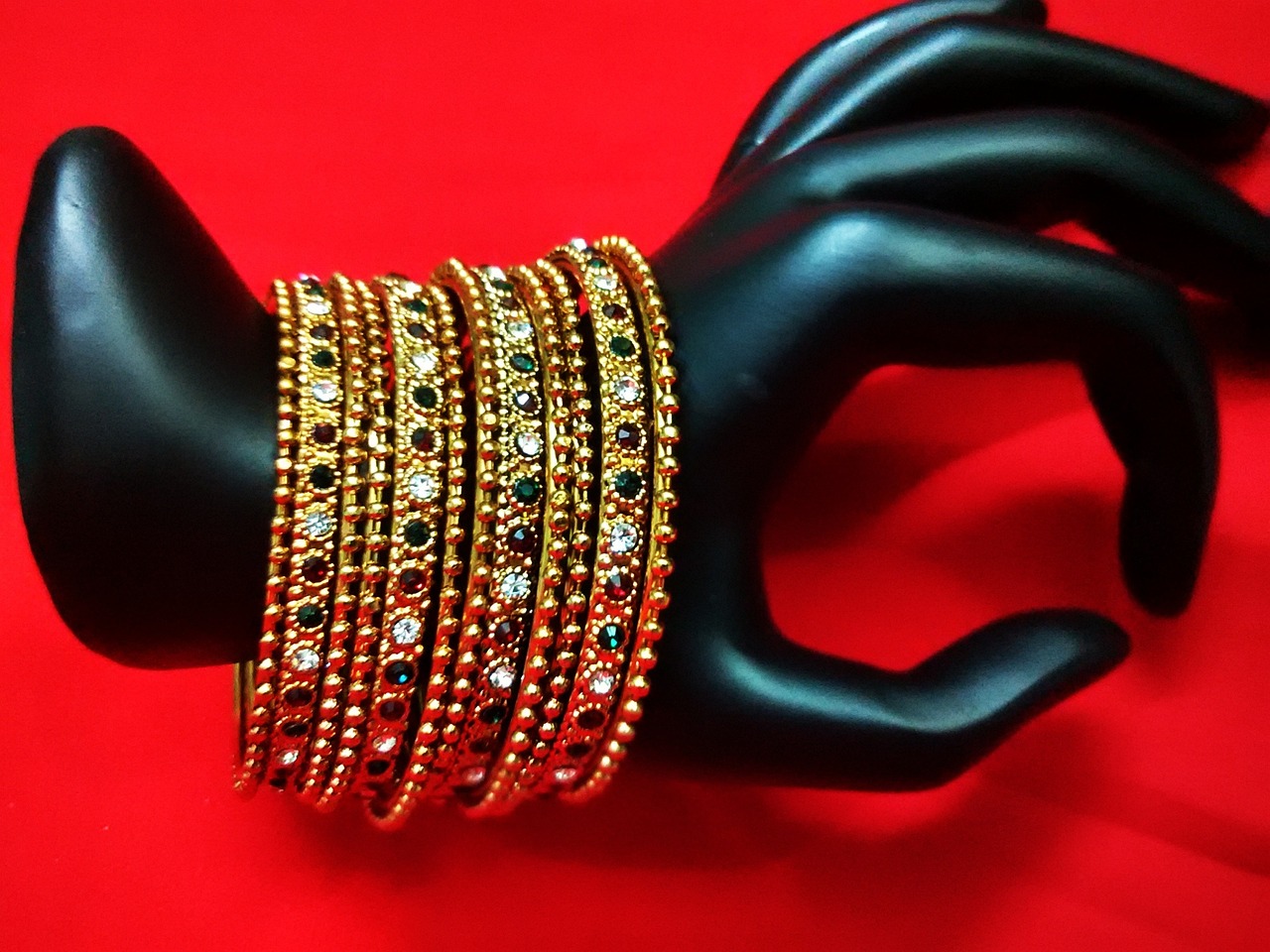This article delves into the intriguing relationship between personal jewelry choices and personality traits. Our favorite pieces of jewelry are not merely adornments; they can serve as reflections of our inner selves and can significantly influence our social interactions.
What Does Your Jewelry Choice Reveal About You?
Jewelry choices often reveal deeper insights into our personality. For instance, someone who prefers bold, statement pieces may be more outgoing and confident, while a lover of delicate, minimalist designs might lean towards a more reserved and introspective nature. Understanding these connections can provide valuable insights into how we perceive ourselves and how others perceive us based on our adornments.
How Does Personality Influence Jewelry Selection?
Our personality traits significantly shape our jewelry preferences. For example, extroverted individuals may gravitate towards vibrant colors and eye-catching designs, while introverts might prefer subtle and understated pieces. This section examines how characteristics like these dictate the types of jewelry we choose to wear.
Are Bold Pieces a Sign of Confidence?
Wearing bold, statement jewelry often indicates a confident personality. Individuals who favor striking pieces tend to be more assertive in social situations. They are not afraid to stand out and express their unique style, which often translates into a strong presence in any gathering.
What Colors and Styles Indicate Confidence?
The colors and styles of bold jewelry can further signify confidence levels. For instance, vibrant colors such as red or royal blue, and unique designs often correlate with a person’s self-assuredness. These choices can convey a sense of power and influence, making a lasting impression in social settings.
Do Minimalist Styles Reflect Simplicity?
In contrast, minimalist jewelry choices often suggest a preference for simplicity and clarity. Such styles can indicate a more reserved or thoughtful personality. Individuals who opt for minimalist designs may value elegance and subtlety, choosing pieces that enhance rather than dominate their overall look.
Is Your Jewelry a Reflection of Emotional State?
Jewelry can also serve as an emotional outlet. People often choose specific pieces based on their current feelings or life situations. For example, someone going through a transformative phase may wear jewelry that symbolizes change, such as a piece with a butterfly motif. This section discusses how our emotional states influence our jewelry selections.
What Role Does Cultural Background Play in Jewelry Choices?
Cultural influences significantly shape our jewelry preferences. Heritage and traditions impact the types of jewelry individuals gravitate towards. For instance, someone from a culture that values ornate jewelry may favor elaborate designs, while another from a minimalist culture may prefer simpler styles.
Are Heirloom Pieces More Meaningful?
Heirloom jewelry often carries deep emotional significance. These pieces can represent family connections and personal history, reflecting values and identity. Wearing an heirloom can create a sense of belonging and continuity, as it connects individuals to their past.
How Do Trends Affect Personal Jewelry Choices?
Fashion trends can influence jewelry selection, sometimes overshadowing personal preferences. This section discusses the balance between following trends and staying true to one’s unique style. While trends may introduce new ideas, the most meaningful choices often come from personal taste.
Can Jewelry Choices Influence Social Perception?
The jewelry we wear can impact how others perceive us in social settings. This section explores the psychological effects of jewelry on first impressions and social interactions. For instance, wearing a luxurious piece may convey wealth and status, while unique, handcrafted items can suggest creativity and individuality.
What Impact Does Jewelry Have on Professional Image?
In professional environments, jewelry choices can convey authority or creativity. This part examines how different styles can affect one’s professional image and career opportunities. For example, classic and understated pieces may project professionalism, while bold accessories can showcase creativity.
How Do Accessories Complement Personality?
Jewelry often serves as an accessory that complements personal style. The right pieces can enhance one’s personality and overall appearance, making a statement about who we are and how we wish to be perceived.
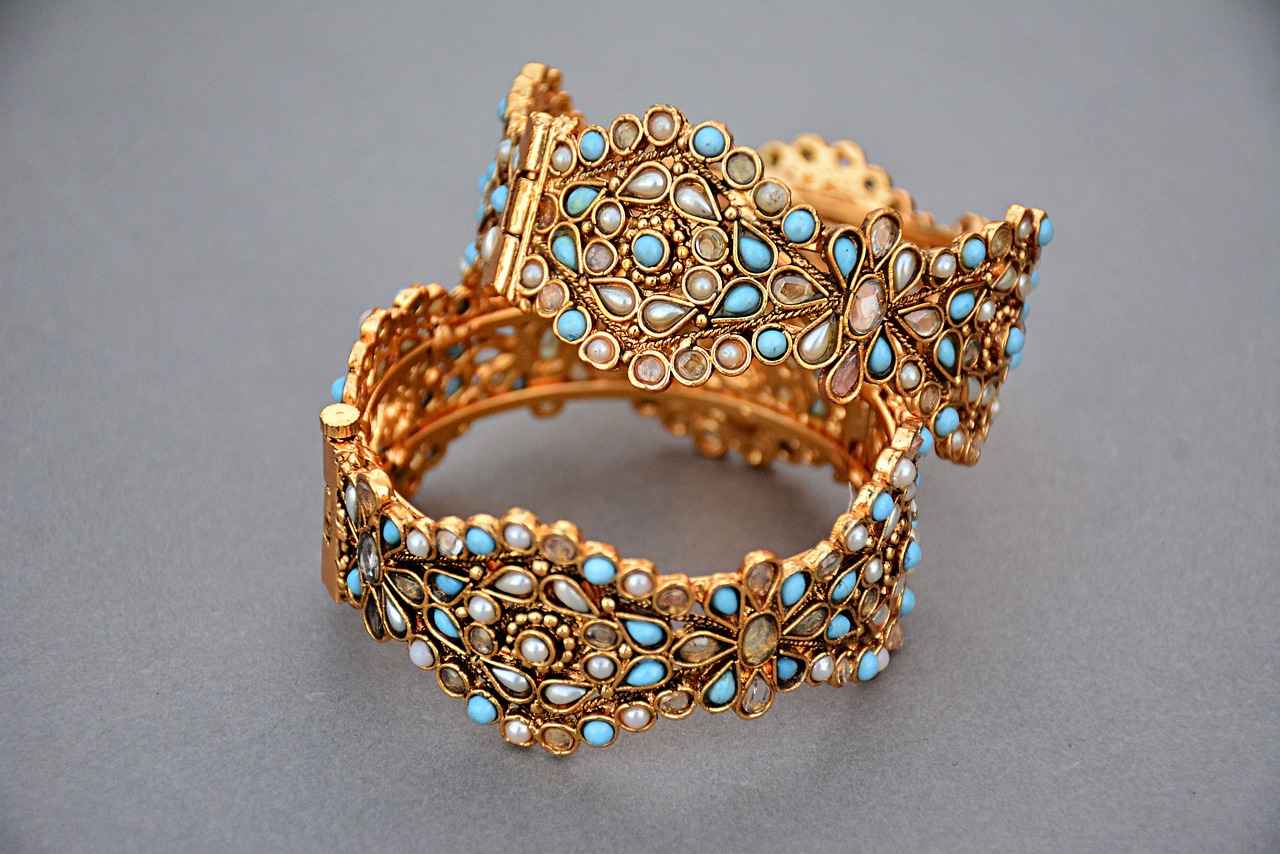
What Does Your Jewelry Choice Reveal About You?
Jewelry has long been more than just an accessory; it serves as an extension of our identity, a way to express our individuality, and a reflection of our inner selves. Our choices in jewelry reveal much about our personality traits, preferences, and even our emotional states. Understanding these connections can help us gain insights into how we perceive ourselves and how we are perceived by others.
When we choose a piece of jewelry, whether it’s a bold statement necklace or a delicate pair of earrings, we are often unconsciously communicating aspects of our personality. For example, individuals who prefer extravagant designs may be seen as more outgoing and confident, while those who opt for minimalist styles might be viewed as more reserved or introspective. This phenomenon highlights the intricate relationship between our adornments and our personal identities.
Our personality traits play a crucial role in determining our jewelry preferences. Those with a creative disposition may gravitate towards unique, artistic pieces that stand out, while pragmatic individuals might choose classic, timeless items that reflect their no-nonsense approach to life. For instance, someone who identifies as an introvert may prefer subtle, understated jewelry that complements their appearance without drawing too much attention, whereas an extrovert might opt for bold, eye-catching accessories that showcase their vibrant personality.
Indeed, wearing bold, statement jewelry often indicates a confident personality. Individuals who favor striking pieces are typically more comfortable in social settings and may enjoy being the center of attention. This section explores how choosing eye-catching jewelry can signal a willingness to express oneself openly and assertively.
The colors and styles of jewelry can further signify confidence levels. Bright colors like red or vibrant hues often correlate with a self-assured attitude, while unique designs can reflect a person’s willingness to embrace their individuality. For example, a person who wears a large, colorful gemstone ring may be perceived as bold and adventurous, willing to take risks in both fashion and life.
On the other hand, minimalist jewelry choices often suggest a preference for simplicity and clarity. Individuals who favor such styles may appreciate elegance and refinement, indicating a thoughtful personality. This section delves into how minimalist pieces can signify a desire for peace and tranquility in one’s life, reflecting a more introspective nature.
Jewelry can also serve as an emotional outlet. Many people choose specific pieces based on their current feelings or life situations. For instance, someone going through a challenging period may wear jewelry that holds sentimental value, such as a family heirloom, as a source of comfort. This part discusses how our emotional states can influence our jewelry selections, providing insight into our internal struggles and triumphs.
Cultural influences significantly shape our jewelry preferences. Different cultures have unique traditions and meanings associated with various types of jewelry, which can impact individual choices. For example, in some cultures, wearing specific types of jewelry might symbolize status or heritage, reflecting deeply rooted values and beliefs.
Heirloom jewelry often carries profound emotional significance. These pieces can represent family connections and personal history, reflecting values and identity. The stories behind heirloom pieces can reveal much about an individual’s background and the importance they place on family traditions.
Fashion trends can also influence jewelry selection, sometimes overshadowing personal preferences. This section discusses the balance between following trends and staying true to one’s unique style, emphasizing the importance of authenticity in personal expression.
The jewelry we wear can impact how others perceive us in social settings. This section explores the psychological effects of jewelry on first impressions and social interactions, illustrating how our adornments can shape perceptions of our personalities.
In professional environments, jewelry choices can convey authority or creativity. This part examines how different styles can affect one’s professional image and career opportunities, highlighting the importance of making thoughtful choices in professional settings.
Jewelry often serves as an accessory that enhances personal style. The right pieces can elevate one’s appearance and reflect individual personality traits, making a statement about who we are without uttering a word.

How Does Personality Influence Jewelry Selection?
Jewelry is more than just an accessory; it is a reflection of our personality traits and how we perceive ourselves in the world. The choices we make regarding jewelry can reveal a lot about our inner selves, including whether we lean towards being an introvert or an extrovert. In this section, we will explore how these personality characteristics influence our jewelry selections and what they signify.
Our personality traits play a crucial role in determining the types of jewelry we are drawn to. For instance, introverts may prefer subtle, understated pieces that reflect their more reserved nature, while extroverts might gravitate toward bold, eye-catching designs that showcase their vibrant personalities. Understanding these connections can provide valuable insights into not only our jewelry preferences but also how we interact with the world around us.
- Introverts: Individuals who identify as introverts often favor minimalist jewelry. They might choose delicate earrings or simple bracelets that do not attract too much attention. These choices reflect their preference for simplicity and their comfort in less ostentatious styles.
- Extroverts: On the other hand, extroverts tend to opt for statement pieces that stand out. Chunky necklaces, bright-colored rings, and oversized earrings are common choices for those who enjoy being the center of attention. Such bold selections can signal confidence and a willingness to engage socially.
Additionally, the emotional state of an individual can also dictate their jewelry choices. For example, someone going through a period of self-discovery may choose more experimental pieces, reflecting their evolving identity. In contrast, during times of stress, individuals might gravitate towards familiar and comforting items, such as heirloom jewelry that holds sentimental value.
Wearing bold jewelry often indicates a confident personality. People who favor striking pieces may be more outgoing and assertive in social situations. The colors and styles of these bold pieces can further signify confidence levels. Vibrant hues and unique designs can correlate with a person’s self-assuredness, suggesting that they are comfortable expressing themselves through their adornments.
On the flip side, minimalist jewelry choices often suggest a preference for simplicity and clarity. Individuals who prefer these styles may have a more reserved or thoughtful personality. They might choose understated pieces that reflect their desire for elegance without excess. This choice can also indicate a focus on quality over quantity, suggesting that they value meaningful connections over superficial interactions.
Jewelry can serve as an emotional outlet, allowing individuals to express their feelings through their choices. For instance, someone feeling adventurous might opt for eclectic and unconventional pieces, while those in a stable emotional state may lean towards classic designs. This emotional connection to jewelry highlights its role as a personal narrative, reflecting not just style, but also life experiences.
Cultural influences can significantly shape our jewelry preferences. Various cultures have distinct styles and meanings associated with different types of jewelry. For example, traditional pieces may symbolize heritage and identity, while contemporary styles might reflect modern values. Understanding these cultural connections can deepen our appreciation for the jewelry we choose to wear.
Fashion trends can also influence jewelry selection, sometimes overshadowing personal preferences. While some individuals may follow trends closely, others may resist them to maintain their unique style. Striking a balance between following trends and staying true to one’s identity can be challenging, yet it is essential for authentic self-expression.
Ultimately, our jewelry choices are a fascinating blend of personality traits, emotional states, cultural backgrounds, and personal preferences. By understanding these connections, we can gain deeper insights into ourselves and how we present ourselves to the world.
Are Bold Pieces a Sign of Confidence?
When it comes to personal style, jewelry plays a significant role in expressing individuality. Among the myriad of choices available, bold, statement pieces stand out as symbols of confidence. But what does it really mean when someone opts for striking jewelry? This section delves into the connection between bold jewelry choices and personality traits, particularly focusing on how these selections may reflect a more outgoing and assertive nature.
Bold jewelry often features vibrant colors, unique designs, and larger-than-life elements that capture attention. Such pieces can include oversized earrings, chunky necklaces, or intricate bracelets that demand to be noticed. Individuals who gravitate towards these striking items may be more willing to express their personalities openly, showcasing their creativity and individuality.
Wearing bold jewelry can significantly influence how one interacts in social settings. People who choose these pieces often exhibit a higher level of self-assurance and are more likely to engage in conversations with ease. Their adornments can serve as conversation starters, breaking the ice and allowing for more dynamic interactions. This confidence can lead to a more outgoing demeanor, making them the life of the party or the focal point in any gathering.
Psychologically, the act of wearing bold jewelry can enhance one’s self-image. Research suggests that individuals who wear striking pieces often feel more empowered and assertive. This empowerment can manifest in various ways, from improved posture to increased vocal projection, further reinforcing their confident persona. Moreover, the choice of bold jewelry can signal to others that the wearer is open to new experiences and challenges.
Cultural backgrounds can also play a role in the types of bold jewelry individuals choose to wear. In many cultures, elaborate jewelry is a sign of status and confidence. For instance, in certain African cultures, large, colorful beads are worn with pride, symbolizing strength and community ties. Understanding these cultural nuances can provide deeper insights into why some individuals feel drawn to bold pieces.
Personal experiences can greatly influence jewelry selection. Individuals who have overcome challenges or achieved significant milestones may choose bold pieces as a way to celebrate their journey. Wearing striking jewelry can serve as a reminder of their strength and resilience, reinforcing their confident identity.
- Know Your Style: Identify the colors and designs that resonate with you.
- Experiment: Don’t be afraid to try different styles until you find what makes you feel confident.
- Consider the Occasion: Choose bold pieces that suit the event and your mood.
In conclusion, the relationship between bold jewelry and confidence is multifaceted. Individuals who wear striking pieces often reflect a more assertive and outgoing personality, enhancing their social interactions and self-image. Whether influenced by cultural backgrounds, personal experiences, or psychological factors, bold jewelry serves as a powerful tool for self-expression. By understanding these dynamics, one can make more informed choices about their jewelry, ultimately allowing their personality to shine through.
What Colors and Styles Indicate Confidence?
When it comes to jewelry, the choices we make often reflect our inner selves and can significantly influence how we are perceived by others. One of the most intriguing aspects of jewelry selection is the relationship between colors, styles, and an individual’s level of confidence. In this section, we delve into how vibrant colors and unique designs can be indicators of self-assuredness, revealing much about a person’s personality.
Colors have a profound psychological impact on our emotions and behaviors. For instance, red is often associated with energy and passion, making it a popular choice for those who wish to exude confidence. Wearing red jewelry can signal assertiveness and a willingness to stand out. Similarly, blue, often linked to calmness and stability, can convey a sense of confidence that is more subdued yet equally powerful.
Bold jewelry styles, such as oversized earrings or chunky necklaces, often suggest a personality that is not afraid to take risks. Individuals who favor these striking pieces may be more outgoing and willing to engage in social situations. The unique designs of such jewelry can serve as conversation starters, further enhancing the wearer’s confidence in social settings.
The design of jewelry also plays a critical role in expressing confidence. Geometric shapes and asymmetrical designs are often seen as modern and edgy, appealing to those who want to project a sense of innovation and self-assuredness. In contrast, more traditional designs may indicate a preference for classic elegance, suggesting confidence rooted in stability and tradition.
Accessories like statement rings or bold bracelets can act as powerful confidence boosters. Wearing pieces that stand out can make individuals feel more empowered, reinforcing their self-image. This is particularly true in professional settings, where a striking piece of jewelry can enhance authority and presence.
Personal experiences and milestones often influence jewelry choices. For example, someone who has recently achieved a significant goal may choose to wear bold, eye-catching jewelry as a celebration of their success. This connection between personal achievement and jewelry selection can further enhance the confidence that these pieces exude.
- Red: Represents passion and energy.
- Blue: Conveys calmness and reliability.
- Green: Symbolizes growth and balance.
- Purple: Reflects creativity and uniqueness.
In conclusion, the colors and styles of jewelry we choose to wear can significantly influence how we perceive ourselves and how others perceive us. By understanding the psychological impact of color and design, we can make more informed choices that not only reflect our personality but also enhance our confidence levels.
Do Minimalist Styles Reflect Simplicity?
Minimalist jewelry has gained immense popularity in recent years, often appealing to those who appreciate a clean aesthetic and a sense of understated elegance. But what does a preference for such styles truly indicate about an individual’s personality? This section explores the connection between minimalist jewelry choices and the traits often associated with those who favor simplicity over extravagance.
Individuals who gravitate towards minimalist jewelry often exhibit a preference for clarity and simplicity in their lives. This preference can be indicative of a more reserved or introspective personality. Such individuals may find comfort in the absence of excessive adornments, choosing instead to express their identity through subtle yet meaningful pieces.
- Thoughtfulness: Minimalist jewelry often requires a thoughtful selection process. Each piece is typically chosen for its significance rather than its ability to draw attention. This suggests that individuals who prefer minimalist designs are likely to be deliberate in their choices, reflecting a deeper level of consideration in their daily lives.
- Reserved Nature: Those who favor minimalist styles may often be more introverted. They may find that bold and flashy jewelry does not resonate with their personality, preferring instead designs that speak volumes through their simplicity.
- Appreciation for Quality: Minimalist jewelry often emphasizes high-quality materials and craftsmanship. This preference can indicate a personality that values substance over style, appreciating the finer details rather than seeking to impress others.
Moreover, minimalist jewelry can serve as a reflection of one’s lifestyle. In today’s fast-paced world, many individuals are drawn to simplicity as a means of combating chaos. The choice to wear minimalist pieces may symbolize a desire for balance and tranquility in life. This can be particularly appealing to those who prioritize mental clarity and emotional stability.
Interestingly, the emotional impact of minimalist jewelry extends beyond personal preference. The psychological effects of wearing such pieces can enhance feelings of calmness and control. When adorned with simple yet elegant jewelry, individuals may feel more at ease, allowing their true personality to shine without the distraction of overly ornate accessories.
Furthermore, minimalist jewelry often carries a timeless quality. Unlike trend-driven pieces that may quickly fall out of favor, minimalist designs tend to remain relevant across various fashion cycles. This enduring appeal aligns with the personality traits of those who appreciate stability and consistency in their lives.
In social settings, wearing minimalist jewelry can also influence how others perceive an individual. People may view those who wear simple, elegant pieces as confident and self-assured, as they are not reliant on flashy accessories to make a statement. This can foster deeper connections based on authenticity rather than superficiality.
Ultimately, the choice of minimalist jewelry is more than just a fashion statement; it is a reflection of the wearer’s personality and values. By embracing simplicity, individuals can convey a sense of clarity and purpose, allowing their true selves to emerge. This connection between jewelry and personality underscores the importance of understanding our choices and their implications in our lives.
Is Your Jewelry a Reflection of Emotional State?
Jewelry is not merely an accessory; it can serve as a profound emotional outlet for individuals. Many people select specific pieces based on their current feelings or significant life events. This connection between jewelry and emotions reveals how our adornments can mirror our inner states and serve as a form of self-expression.
For instance, someone experiencing joy may opt for vibrant, colorful pieces that reflect their happiness. Bright gemstones or playful designs can evoke feelings of positivity and energy. On the other hand, during times of sorrow or loss, individuals might gravitate towards more subdued or sentimental pieces, such as heirloom jewelry that carries memories of loved ones. This behavior underscores the idea that jewelry is not just about aesthetics but also about the emotional narratives we attach to them.
Moreover, the act of wearing certain jewelry can also serve as a psychological comfort. For example, a person going through a challenging period may choose to wear a piece that symbolizes strength or resilience, such as a pendant with a motivational quote or a charm that represents overcoming adversity. This choice can act as a daily reminder of their inner strength, helping to bolster their confidence during tough times.
In addition, jewelry can be a tangible representation of milestones in our lives. Engagement rings, for example, signify love and commitment, while graduation rings celebrate achievement and new beginnings. Each piece tells a story, encapsulating emotions tied to significant moments. This emotional connection can make these pieces even more cherished, as they are imbued with personal significance.
Furthermore, the choice of jewelry can also change with our evolving emotional states. Someone who is feeling adventurous might choose bold, statement pieces that reflect their desire for exploration and excitement. Conversely, during times of introspection, they may prefer minimalist designs that resonate with their need for simplicity and clarity. This fluidity in choice illustrates how jewelry can adapt to our emotional landscapes.
It’s also worth noting that cultural factors play a role in how we use jewelry as an emotional outlet. In many cultures, specific pieces are worn during rituals or ceremonies that mark emotional transitions, such as weddings, funerals, or coming-of-age celebrations. These pieces often carry deep emotional weight and signify the importance of the events they commemorate, further highlighting the connection between jewelry and emotional expression.
In conclusion, the relationship between jewelry and emotional states is complex and multifaceted. Our choices often reflect not just our aesthetic preferences but also our current feelings, personal histories, and cultural backgrounds. By understanding this connection, we can appreciate how jewelry serves as more than just an accessory; it is a powerful tool for emotional expression and self-identity.
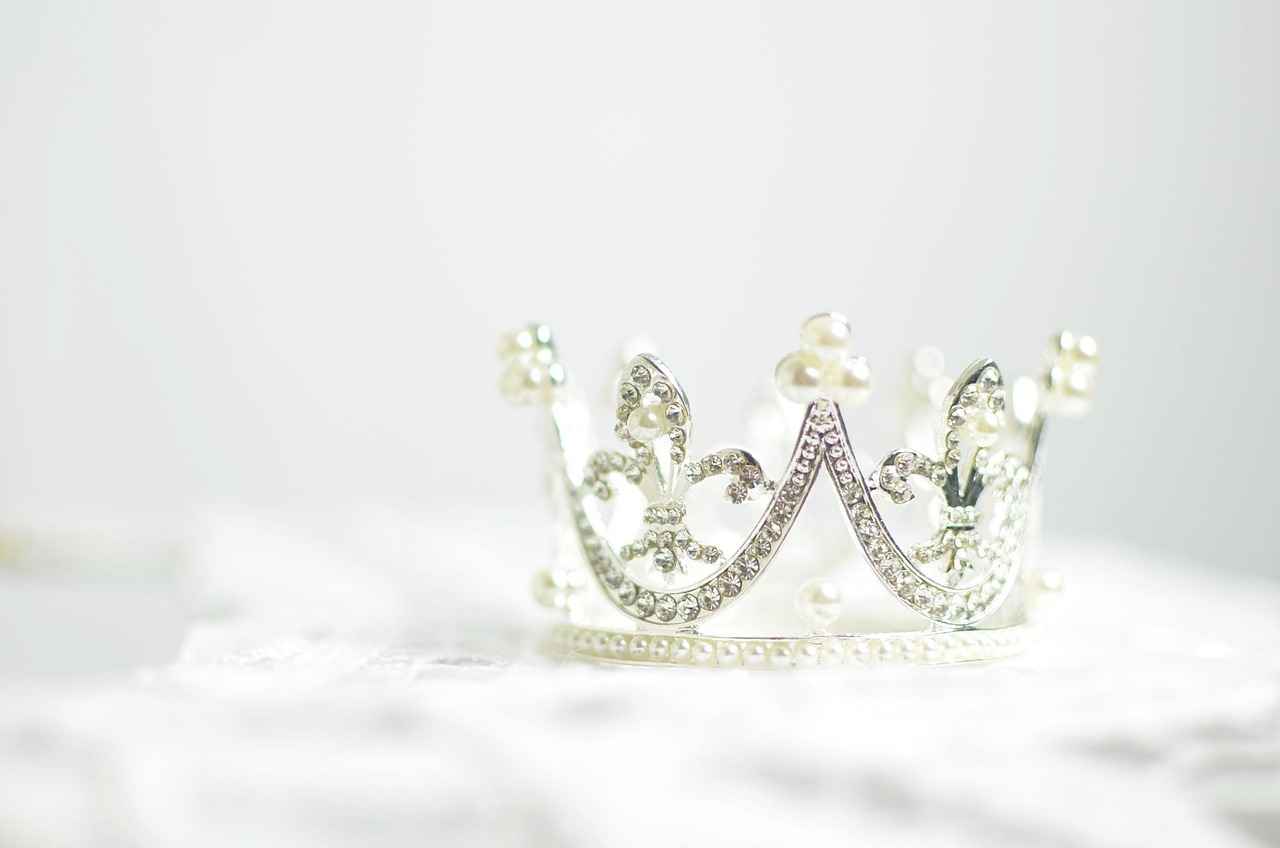
What Role Does Cultural Background Play in Jewelry Choices?
Cultural influences are pivotal in shaping our jewelry preferences, often reflecting our heritage, traditions, and personal identity. This section delves into how these cultural backgrounds significantly impact the types of jewelry individuals are drawn to, revealing a rich tapestry of meaning behind our adornments.
Jewelry is not merely an accessory; it is a symbol of identity and a reflection of cultural heritage. Different cultures have unique jewelry styles that often carry deep meanings. For instance, in many Asian cultures, jade is considered a precious stone that symbolizes purity and protection. In contrast, in Western cultures, diamonds are often associated with love and commitment, particularly in engagement rings. These cultural significances can greatly influence individual preferences.
Jewelry often incorporates cultural symbols that carry specific meanings. For example, Native American jewelry frequently features turquoise and silver, which are not only aesthetically pleasing but also rich in cultural significance. Each piece tells a story, often relating to the wearer’s ancestry and traditions. Understanding these symbols can provide insights into why individuals may gravitate towards specific styles or materials.
Cultural celebrations and festivals play a crucial role in jewelry selection. During events such as weddings, graduations, or religious ceremonies, individuals often choose jewelry that reflects their cultural background. For instance, in Indian weddings, brides typically wear elaborate gold jewelry adorned with intricate designs, symbolizing wealth and prosperity. Such occasions encourage individuals to wear pieces that not only enhance their appearance but also honor their traditions.
Heirloom jewelry often carries a deep emotional weight, linking generations together. These pieces, passed down through families, often embody cultural narratives and personal histories. For many, wearing an heirloom signifies a connection to their roots and a respect for family traditions. It reflects values such as loyalty and heritage, making these items more than just decorative pieces; they are a testament to one’s lineage.
In today’s globalized world, cultural jewelry is increasingly influenced by modern trends. Many individuals blend traditional styles with contemporary designs, creating unique pieces that resonate with their personal identity. This fusion can lead to a richer appreciation of cultural heritage while allowing for personal expression. However, it also raises questions about authenticity and the preservation of traditional jewelry-making techniques.
For many, jewelry serves as a means of expressing cultural identity. Wearing culturally significant pieces can instill a sense of pride and belonging. Individuals may choose to wear jewelry that reflects their ethnic background or personal beliefs, allowing them to share their story without uttering a word. This choice often becomes a conversation starter, fostering connections with others who appreciate similar cultural narratives.
Understanding the cultural influences behind jewelry choices can enrich one’s collection. By recognizing the significance of various styles and materials, individuals can make informed decisions that resonate with their identity. This knowledge not only enhances the personal value of each piece but also promotes respect for diverse cultural traditions. Collecting jewelry with cultural significance can lead to a more meaningful and intentional approach to adornment.
Are Heirloom Pieces More Meaningful?
Heirloom jewelry often transcends mere aesthetics, holding within it a tapestry of family history and personal narratives. These pieces are more than just adornments; they embody memories, traditions, and a sense of belonging that connects generations. In this exploration, we delve into how heirloom jewelry can serve as a powerful emblem of identity and values, reflecting the essence of those who wore it before us.
Unlike contemporary pieces, heirloom jewelry is often crafted with a story in mind. Each item may have been passed down through generations, with its own unique tale of love, sacrifice, or celebration. This rich background imbues heirloom pieces with a significance that is deeply personal. Family connections are preserved within these items, as they often symbolize pivotal moments in family history, such as weddings, births, or anniversaries.
Wearing an heirloom piece can be a profound way to express one’s identity. These items often reflect the values and traditions of a family, allowing individuals to carry a piece of their heritage with them. For instance, a grandmother’s ring may not only signify love but also embody the resilience and strength of the women in the family. This connection to the past can instill a sense of pride and continuity, enriching the wearer’s personal narrative.
Heirloom jewelry serves as a tangible link between generations. When a piece is passed down, it often comes with stories and lessons that reinforce family bonds. Sharing these stories can strengthen connections, as each family member may interpret the piece differently, adding layers to its significance. This act of sharing can also encourage younger generations to appreciate their heritage, fostering a deeper understanding of their family’s values and traditions.
The emotional weight of heirloom jewelry is profound. These pieces often evoke memories of loved ones, serving as a reminder of their presence and the lessons they imparted. Wearing such jewelry can provide comfort, especially during significant life events or transitions. It acts as a reminder of love and support, reinforcing the idea that we are never truly alone in our journeys.
In today’s fast-paced world, heirloom jewelry reminds us of the importance of timelessness versus fleeting trends. Many individuals seek to incorporate heirloom pieces into their modern wardrobes, blending the old with the new. This fusion not only showcases personal style but also pays homage to family history. As people increasingly value sustainability and uniqueness, heirloom jewelry stands out as a meaningful choice that resonates with contemporary values.
While heirloom jewelry carries immense sentimental value, it can also present challenges. Issues such as maintenance, proper care, and authenticity can arise, especially with older pieces. Families may need to navigate the delicate balance of preserving these treasures while ensuring they remain wearable and appreciated. Additionally, discussions around inheritance can sometimes lead to familial disputes, highlighting the need for open communication about the significance and future of these cherished items.
In conclusion, heirloom jewelry represents a rich tapestry of family connections, personal history, and identity. These pieces are more than just beautiful objects; they are vessels of emotional significance that connect us to our past and shape our future. Whether worn on special occasions or as part of everyday attire, heirloom jewelry continues to play a vital role in our lives, reminding us of the enduring bonds that tie us to our loved ones.
How Do Trends Affect Personal Jewelry Choices?
In the ever-changing world of fashion, trends play a significant role in shaping our jewelry choices. While many individuals are drawn to the latest styles, it’s essential to consider how these trends can sometimes overshadow our personal preferences. This section delves into the intricate balance between embracing contemporary trends and remaining true to one’s unique style.
Fashion trends are often pervasive, infiltrating our wardrobes and influencing our jewelry selections. From bold statement pieces to delicate minimalist designs, trends can dictate what is deemed fashionable at any given moment. However, this can lead to a dilemma: should we prioritize current trends or stay loyal to our personal tastes?
To navigate the world of jewelry effectively, it’s vital to identify your personal style. Start by assessing your existing jewelry collection. What pieces do you wear most often? Do you gravitate towards vintage designs, or are you more inclined to modern aesthetics? Understanding your preferences can help you incorporate trendy pieces that resonate with your style rather than simply following the crowd.
Social media platforms like Instagram and Pinterest are powerful influencers of jewelry trends. They showcase the latest styles, often leading to a surge in demand for specific pieces. However, while these platforms can inspire, they can also create pressure to conform. It’s essential to remember that your jewelry should reflect your personality, not just what’s trending online.
Absolutely! Blending trendy pieces with your unique style can create a harmonious balance. For instance, if you love bohemian aesthetics but notice the rise of geometric designs, consider incorporating a few geometric pieces that complement your existing jewelry. This way, you can stay fashionable while still expressing your individuality.
Staying true to your personal style is crucial for several reasons:
- Confidence: Wearing jewelry that resonates with your personality boosts your confidence.
- Authenticity: Authenticity in style fosters a sense of self-identity and individuality.
- Longevity: Personal pieces often have more lasting value than fleeting trends.
To make informed jewelry choices, consider the following:
- Research: Stay updated on trends but also explore the history and significance of various styles.
- Experiment: Don’t hesitate to try new things, but always evaluate how they align with your personal aesthetic.
- Seek Inspiration: Look for inspiration from various sources, including fashion icons, art, and nature.
Ultimately, the key to navigating jewelry trends lies in finding a balance. Embrace the trends that resonate with you while honoring your unique style. By doing so, you can express yourself authentically through your jewelry choices, creating a look that is both fashionable and true to who you are.
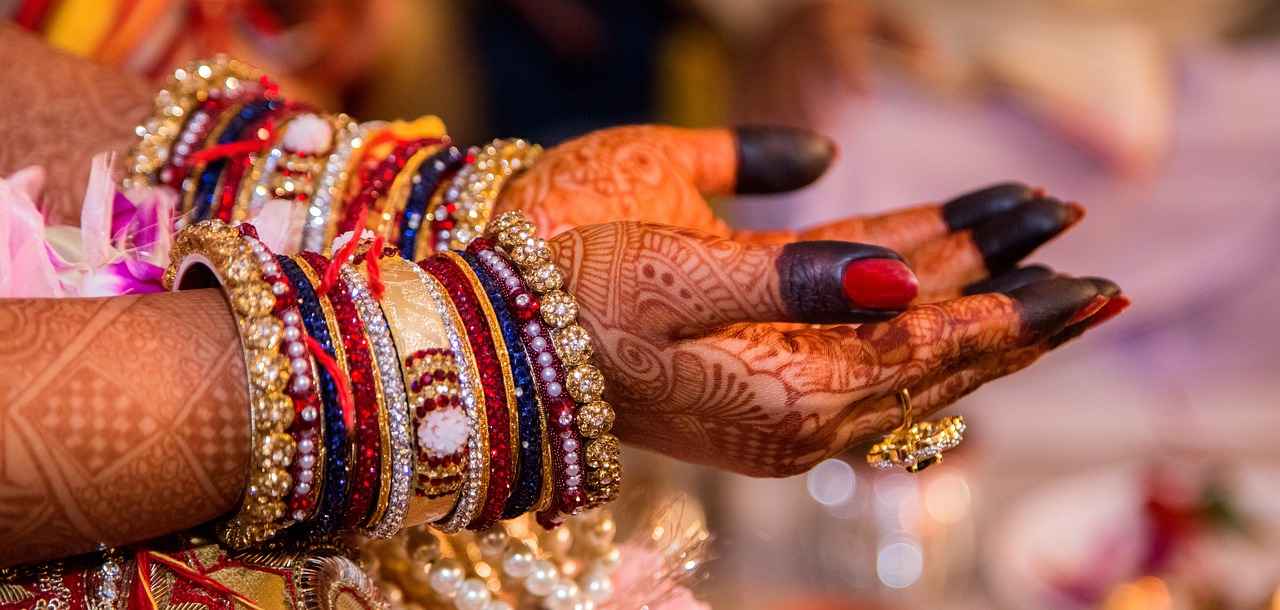
Can Jewelry Choices Influence Social Perception?
The jewelry we choose to wear is not merely a matter of aesthetics; it plays a significant role in shaping social perceptions and influencing first impressions. This fascinating connection between jewelry and social interactions can reveal much about our personalities and how we wish to be perceived by others.
When we meet someone for the first time, our brains quickly make judgments based on visual cues, and jewelry is a prominent part of that equation. Bold and eye-catching pieces can project confidence and assertiveness, while delicate and understated jewelry may convey a sense of elegance and sophistication. Research shows that individuals often form opinions about someone’s status, personality, and even trustworthiness based on their jewelry choices.
- Statement Jewelry: Large, colorful pieces can indicate an outgoing personality, suggesting that the wearer is comfortable in social settings and enjoys being the center of attention.
- Minimalist Jewelry: Subtle and simple designs often reflect a more introspective nature. Individuals who prefer minimalist styles may be seen as thoughtful and reserved.
- Vintage or Heirloom Pieces: Wearing jewelry with a history can signal a connection to tradition and family values, often evoking feelings of nostalgia and stability.
In professional environments, the jewelry we wear can significantly influence how colleagues and clients perceive us. For instance, elegant and classic pieces might enhance a professional image, suggesting reliability and competence. Conversely, overly flashy jewelry may be seen as unprofessional in certain contexts. It’s essential to strike a balance between personal expression and appropriateness in the workplace.
Cultural background plays a pivotal role in jewelry selection. Different cultures have unique meanings associated with various types of jewelry. For example, in some cultures, wearing specific gemstones or metals can signify wealth or status, while in others, they may represent spiritual beliefs. Understanding these cultural nuances can deepen our appreciation for the jewelry we choose and the messages we send to others.
Jewelry often carries personal significance beyond its aesthetic value. People frequently wear pieces that hold sentimental value, such as gifts from loved ones or items that commemorate important life events. This personal connection can influence how individuals perceive themselves and how they wish to be perceived by others. For instance, wearing a piece that symbolizes resilience or achievement can project strength and determination.
Fashion trends can heavily influence our jewelry selections, often leading individuals to choose pieces that align with current styles rather than personal preferences. While following trends can help individuals feel fashionable, it’s essential to maintain a sense of personal identity. Striking a balance between trendy pieces and timeless classics can enhance one’s overall style while still allowing for personal expression.
In summary, the jewelry we wear significantly impacts how others perceive us in social settings. It serves as a form of non-verbal communication, conveying messages about our personality, values, and social status. By understanding the psychological effects of jewelry, we can make more informed choices that align with our desired self-image and the impressions we wish to leave on others.
What Impact Does Jewelry Have on Professional Image?
Jewelry is not just an accessory; it plays a significant role in shaping one’s professional image. The pieces we choose to wear can communicate various messages about our personality, authority, and creativity. Understanding the impact of jewelry in a workplace setting is crucial for anyone looking to enhance their professional presence.
In many professional environments, certain jewelry styles are associated with authority and confidence. For example, wearing a classic watch or structured pieces can project a sense of reliability and leadership. These choices often reflect a polished and serious demeanor, which can be essential in roles that require decision-making and responsibility.
On the other hand, jewelry that is more playful or unconventional can signal creativity and innovation. Pieces that feature unique designs, vibrant colors, or artistic elements can suggest that an individual is open-minded and willing to think outside the box. This can be particularly beneficial in fields such as marketing, design, or the arts, where creativity is highly valued.
- Classic Styles: Timeless pieces like stud earrings, simple necklaces, and classic watches are often seen as professional and appropriate.
- Statement Jewelry: Bold pieces can be effective in creative industries, but should be worn thoughtfully to avoid overwhelming your professional attire.
- Minimalist Options: Simple and understated jewelry can convey professionalism while still allowing personal expression.
Cultural background can significantly influence jewelry choices and perceptions in the workplace. For instance, in some cultures, wearing specific types of jewelry can signify status or achievement. Understanding these cultural nuances can enhance interpersonal relationships and improve communication in diverse work environments.
Indeed, the jewelry we wear can influence how we are perceived by colleagues and superiors, potentially affecting career advancement. A well-chosen piece can enhance an individual’s image, making them appear more competent and trustworthy. Conversely, inappropriate jewelry choices can detract from a professional image, leading to misinterpretation of one’s capabilities.
- Overly Flashy Pieces: Jewelry that is too extravagant can distract from your professional message.
- Inappropriate Themes: Avoid jewelry with themes that may be considered offensive or unprofessional.
- Excessive Accessories: Wearing too many pieces can create a cluttered look, which may be perceived as unprofessional.
When preparing for a job interview, selecting the right jewelry can be as crucial as choosing the right outfit. Opt for pieces that enhance your look without overwhelming it. A simple pair of earrings or a subtle necklace can complement your attire and project a polished image. Remember, the goal is to appear confident and professional without drawing undue attention to your accessories.
In summary, the impact of jewelry on professional image is profound. By understanding how different styles convey authority or creativity, individuals can make informed choices that enhance their professional presence and open doors to new opportunities.
How Do Accessories Complement Personality?
Accessories, particularly jewelry, are not merely decorative items; they are powerful tools that can significantly enhance one’s personal style and express individuality. The right pieces of jewelry can serve as an extension of our personality, reflecting our tastes, values, and even our emotional states. This section delves into how jewelry choices can complement and amplify our unique characteristics.
Jewelry has long been recognized as a form of self-expression. The pieces we choose to wear often reveal insights about our personality and lifestyle. For instance, someone who opts for vintage jewelry may appreciate history and nostalgia, while a fan of modern, geometric designs might embody a more contemporary and adventurous spirit. Understanding these connections can help individuals make more intentional choices about their accessories.
Jewelry can transform even the simplest outfit into a statement of style. A bold necklace can draw attention to the face, while delicate earrings can add a touch of elegance. The right pieces not only enhance one’s appearance but also boost confidence. For example, wearing a striking ring can make the wearer feel more empowered and ready to take on the world.
First impressions are often formed within seconds, and jewelry plays a crucial role in this process. A well-chosen piece can convey professionalism, creativity, or sophistication. For instance, someone wearing a sleek watch may be perceived as punctual and organized, while colorful, artistic pieces might suggest a more creative and open-minded personality. Understanding how jewelry influences perception can be beneficial in both personal and professional settings.
Personal style is a crucial factor in jewelry selection. Those with a minimalist aesthetic may gravitate towards simple, understated pieces, while individuals with a bold style may favor chunky, eye-catching jewelry. This alignment of jewelry with personal style not only enhances overall appearance but also reinforces self-identity. People often choose pieces that resonate with their values and lifestyles, creating a cohesive look that feels authentic.
Cultural background can significantly influence jewelry choices. Many cultures have traditional pieces that carry deep meanings, such as wedding bands or ceremonial jewelry. These items often symbolize important life events and personal connections. By wearing culturally significant jewelry, individuals can express pride in their heritage while also complementing their personal style.
Heirloom jewelry, passed down through generations, often holds immense sentimental value. These pieces can tell stories of family history and personal milestones, making them more than just accessories. Wearing heirloom jewelry can evoke feelings of connection and nostalgia, enhancing the emotional depth of one’s personal style.
Fashion trends can heavily influence jewelry choices, sometimes leading individuals to select pieces that align more with current styles than their personal preferences. However, it’s essential to find a balance between following trends and staying true to one’s unique aesthetic. By incorporating trendy elements into a personal style, individuals can create a look that feels both current and authentic.
- Statement Necklaces: Draw attention and add flair.
- Classic Watches: Convey professionalism and elegance.
- Colorful Earrings: Brighten up your face and outfit.
- Stackable Rings: Showcase creativity and individuality.
In summary, the jewelry we choose to wear is a significant aspect of our personal style and self-expression. By understanding how different pieces can enhance our appearance and reflect our personalities, we can make informed choices that not only complement our looks but also resonate with our inner selves.
Frequently Asked Questions
- What does my jewelry say about my personality?
Your jewelry choices can reveal a lot about your personality. For example, bold pieces might indicate confidence and a vibrant personality, while minimalist styles often reflect a more reserved or thoughtful nature.
- Can my mood influence my jewelry selection?
Absolutely! Many people choose jewelry based on their current emotional state. For instance, someone feeling joyful might opt for colorful, eye-catching pieces, while someone going through a tough time might gravitate towards more subdued or meaningful items.
- How do cultural backgrounds affect jewelry choices?
Cultural influences play a significant role in our jewelry preferences. Traditions, heritage, and cultural symbolism can shape the types of jewelry individuals are drawn to, often reflecting their identity and values.
- Do trends really impact personal jewelry choices?
Yes, trends can greatly influence what we wear. However, it’s essential to strike a balance between following trends and staying true to your unique style. The right jewelry should resonate with who you are, not just what’s popular.
- Can jewelry choices affect how others perceive me?
Definitely! The jewelry you wear can impact first impressions and social interactions. For instance, wearing elegant pieces in a professional setting can convey authority, while casual styles might suggest a more approachable demeanor.
